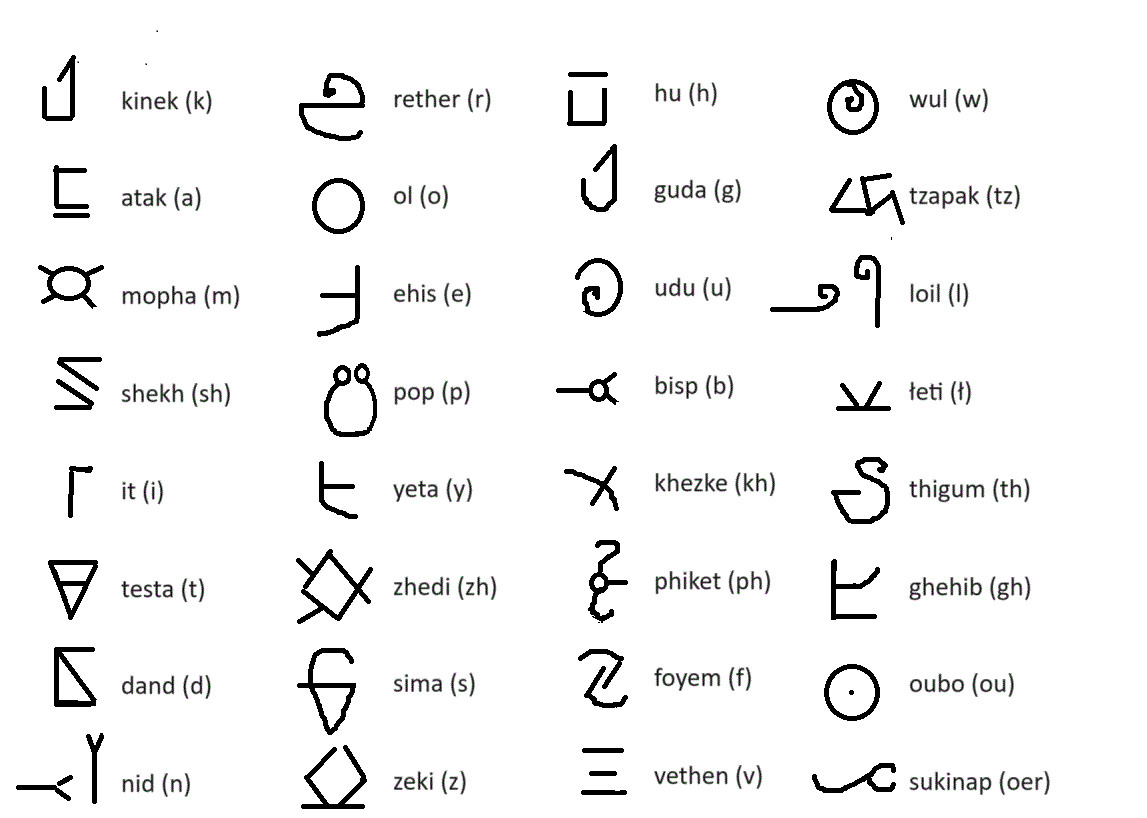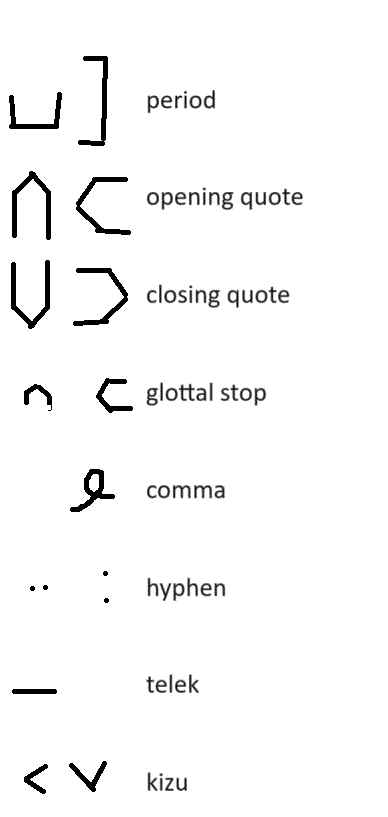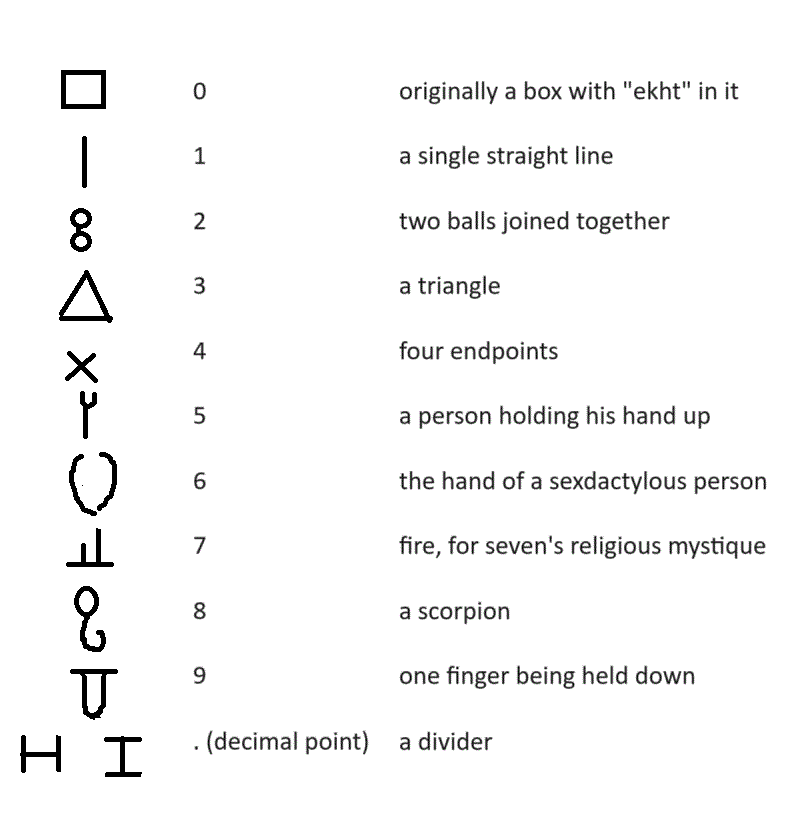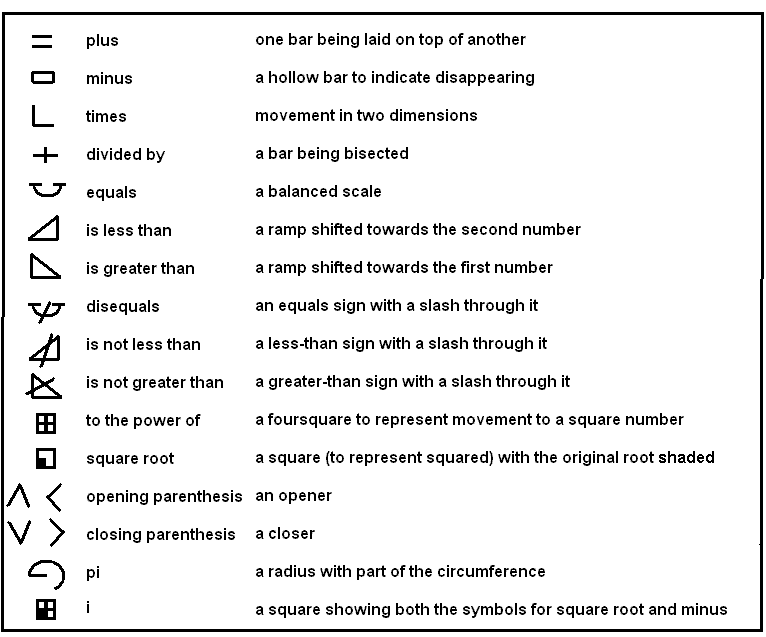The Kankonian alphabet
Where two forms are shown, the form on the left is used for vertical writing, and the form on the right is used for horizontal writing.

Punctuation

The period is used to mark the end of a sentence -- a statement, command, question or exclamation.
The quotation marks are placed around quoted material, when writing dialogue or copying others' exact words. A small opening quote is also used as an apostrophe, which represents a glottal stop in Kankonian. Two closing quotes is placed after a number like .142857 to represent a repeating decimal.
The comma is used after the end of a clause begun with a conjunctional connective, or before a clause begun with a conjunctional connective in the middle of a sentence. Two commas in a row are used where English writers would use a semicolon or dash.
The hyphen is used for compound words that are not fully fused.
A horizontal bar called a telek was traditionally used in between paragraphs in vertically written material. Now paragraphs are started in a new line.
A mark called a kizu is traditionally used to emphasize a word; it is put over the accented vowel in the word. A kizu resembles a less-than sign (<) when the writing is vertical, and it resembles a hacek when the writing is horizontal. Underlining is also used in horizontal type. Bold print can be used to emphasize a keyword.
Titles of books, periodicals, academic writings, plays, albums, songs, movies, TV shows and video games are placed in quotation marks in vertical writing; in horizontal writing songs are put in quotation marks and all the others are underlined.
Numerals

Operations

Back to the Kankonian language page.

